How to Measure Baking Ingredients
Knowing how to measure ingredients properly is very important when baking. I’ll explain the difference between weight and volume measure and let you know which equipment to have in your kitchen.
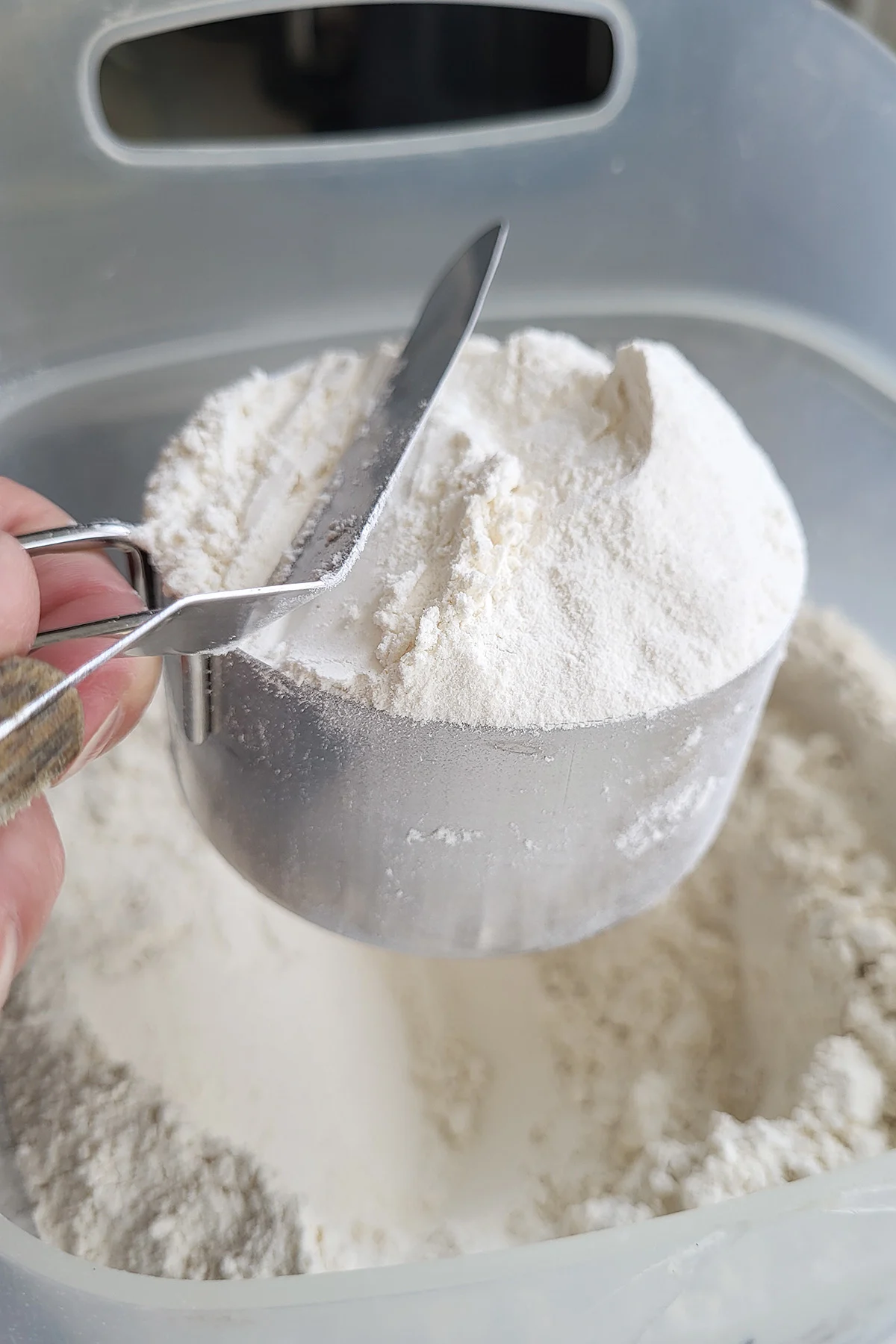
Table of contents
- What is the most accurate way to measure ingredients when baking?
- How to weigh your baking ingredients on a kitchen scale
- How to measure a cup of flour and other dry ingredients for baking
- What’s the difference between fluid ounces and ounces?
- How to measure liquid ingredients for baking
- FAQs about measuring baking ingredients
- Pastry Chef tips for measuring baking ingredients
What is the most accurate way to measure ingredients when baking?
The best way to measure baking ingredients is to weigh them. Weight measurements are more precise than volume measures because volume measures can vary based on how the ingredient is handled.
One of the easiest ways to improve your baking is to invest in a kitchen scale. A kitchen scale is relatively inexpensive and does not take up a great deal of space in your cabinet. Look for a scale that gets good reviews, is easy to clean and can switch from ounces to grams.
If you don’t own a kitchen scale or if the recipe you want to make does not list weight measures then you’ll have to measure your ingredients by volume (cups). For best results it is helpful to know the method the recipe writer used to measure ingredients by volume.
If you are following a Baking Sense recipe I use the “dip and sweep” method for filling a measuring cup with a dry ingredient. See below for a description.
How to weigh your baking ingredients on a kitchen scale
- Turn on the scale and set it for either ounce or gram measure, depending on your recipe.
- Set the container you are using to collect the ingredients on the scale and hit the “tare” button to zero out the weight of the container.
- Add your ingredients to the container to the weight listed in the recipe.
- If you want to measure multiple ingredients into the same container “tare out” the weight of the container and contents before adding the next ingredient.
How to measure a cup of flour and other dry ingredients for baking
There is no “correct” way to fill a cup of flour. Because professional bakers do not use volume measure there is no “industry standard” for how to fill a measuring cup. There are several different methods used by home bakers.
Dip and Sweep
This is the easiest and fastest way to fill a measuring cup with a dry ingredient. You simply “dip” the cup into the bin, overfill it with your ingredient, then “sweep” away the excess so the ingredient is level with the top of the cup. Using the dip and sweep method you should consistently get about 5 ounces of all purpose flour in the cup.
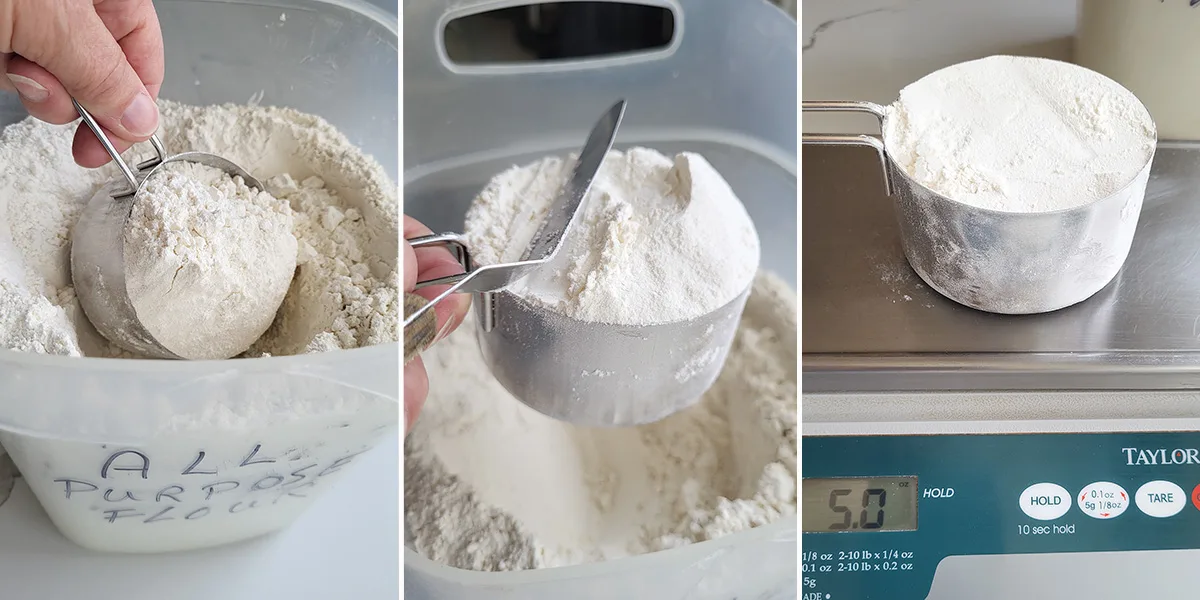
Lightly spoon and sweep
Lightly spoon your ingredient into the cup until it is overfilled, then sweep away the excess. Using this method usually results in about 1/2 ounce less per cup of flour than using the dip and sweep.
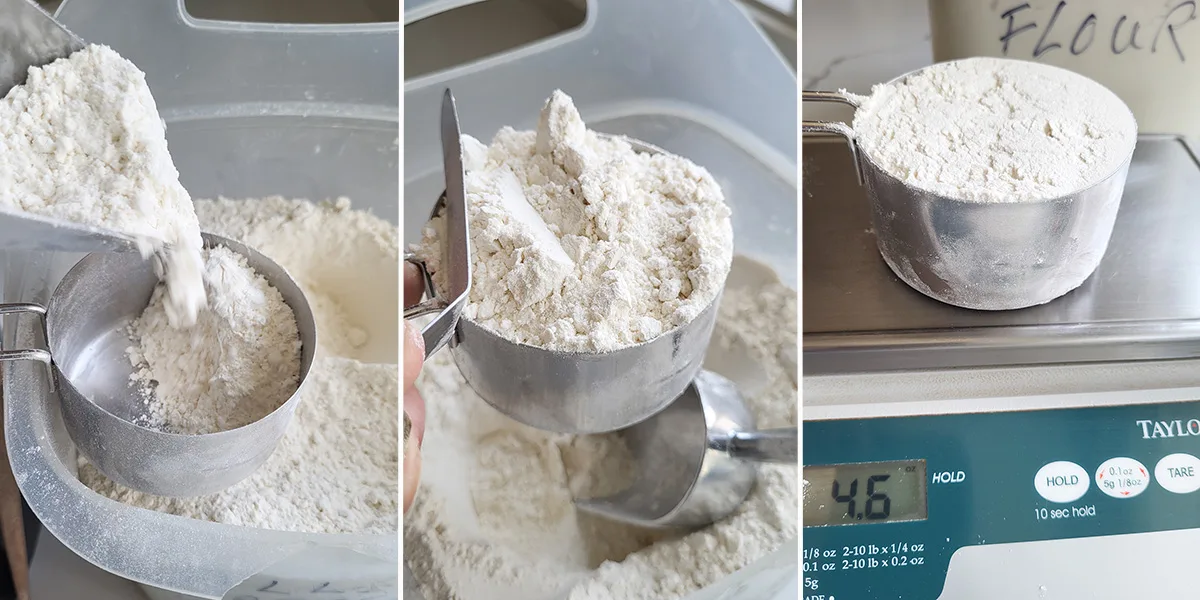
Fluff, spoon and sweep
Use a spoon to “fluff up” the flour in the bin, then spoon the flour into the cup before leveling. A cup of flour measured this way could weigh as much as an ounce less than a cup filled using the dip and sweep method.
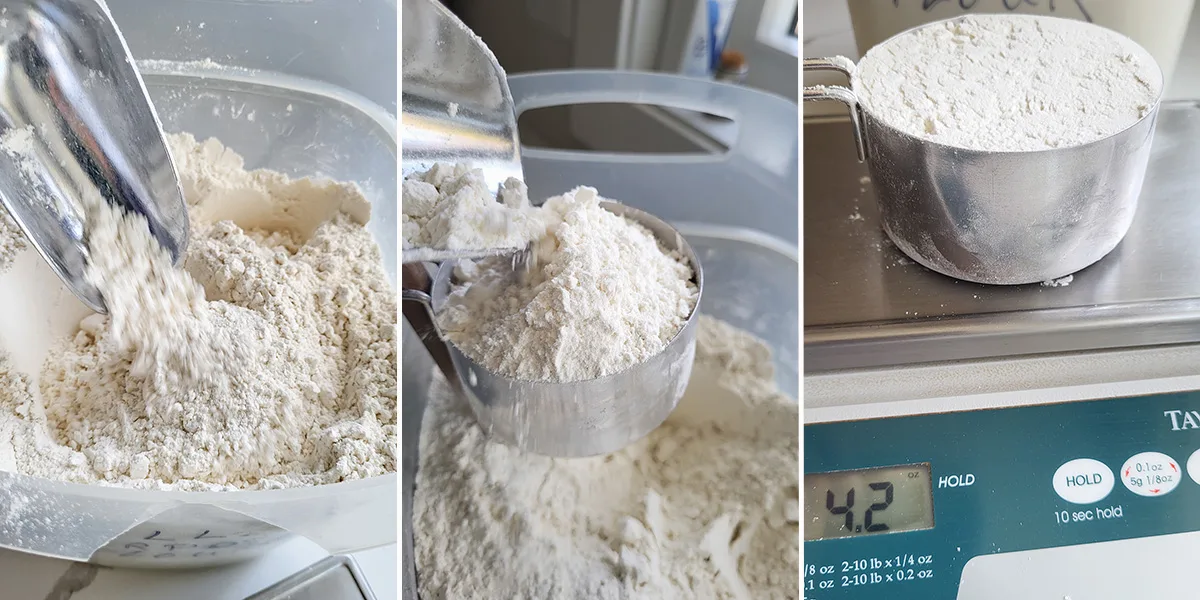
What’s the difference between fluid ounces and ounces?
Fluid ounces (fl oz) and ounces (oz) are different units of measurement.
Fluid ounces measure the volume of liquid ingredients such as water, milk, or oil. Fluid ounces are measured using a liquid measuring cup.
Ounces measure the weight or mass of an ingredient. Ounces are measured using a scale.
While both units of measurement are commonly used in baking, fluid ounces and ounces cannot be used interchangeably. You’ll need to use the unit of measurement specified in the recipe.
How to measure liquid ingredients for baking
Measuring liquid ingredients can be confusing because the weight of a cup of a fluid depends on its density. For example, a cup of water weighs about 8 ounces, a cup of oil may weigh less than 8 ounces and a cup of honey will weigh more than 8 ounces.
- If the recipe you are using specifies the liquid ingredient in “fl ounces” or “cups” then you should measure the fluid in a liquid measuring cup.
- If the recipe you are using specifies the liquid ingredient in “ounces” then you should weigh the ingredient using a scale.
FAQs about measuring baking ingredients
If you have a kitchen scale you should always weigh your ingredients for the best results. Volume measurements are listed for those who don’t own a kitchen scale.
Weighing your baking ingredients will give you the most consistent results. While an ounce (or gram) of flour is always the same, the amount of flour in a cup will vary based on how the cup was filled.
Unlike water, which is always 8 oz per cup, the weight of a dry ingredient like flour will vary based on how the measuring cup is filled. The weight of a cup of all purpose flour can range from 4 to 5 ounces depending on how the cup is filled.
If you are weighing your ingredients it doesn’t matter since an ounce of flour is always an ounce of flour. If you are using volume measurement (cups) then only sift the flour first if the recipe specifically lists “sifted flour” as the ingredient. Otherwise, always assume to sift flour after measuring.
Pastry Chef tips for measuring baking ingredients
- Use proper dry measuring cups for dry ingredients. These generally come in sets including 1/4 cup, 1/3 cup, 1/2 cup and 1 cup sizes. Dry measuring cups usually have a long handle and are made from plastic or lightweight metal. Unless the recipe specifies a “heaping cup” of a dry ingredient, always level the ingredient in the cup.
- Use a proper liquid measuring cup for wet ingredients. Liquid measuring cups are generally made from glass or plastic. The measurement markings are listed on the side of the cup. Get a cup with a comfortable handle and a pouring spout.
- To check the ingredient level on a liquid measuring cup view the cup from eye level with the cup sitting on a flat surface.
- If you are measuring a sticky liquid like honey or molasses you can lightly coat the inside of the cup with oil or pan spray so the honey doesn’t stick.
- Make sure you are using standard measuring spoons. A “teaspoon” measure is not the same as the spoon you use for stirring your cup of tea.

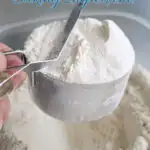
The best is when I find a layer cake recipe and the amount per pan is listed in grams. When it’s not I weigh my bowl beforehand, then after, subtract the bowl weight and divide the batter by the numbers of desired layers. The result is much more even layers.
One thing confuses me. I often use the plastic pre measured cups such as 1/4, 1/3, 1/2 etc to measure peanut butter, honey, milk. However you’re saying not to. My recipes have not failed although I’m not using your recommendation of a glass measuring cup with listings on the side.
Also when you were weighing the flour on the scale, shouldn’t you subtract the tare or the weight of the measuring cup otherwise you’re adding it’s weight to the total?
Confusing to this 65 year youngster. Haha
For things like peanut butter and honey if the recipe lists the ingredient in “cups” you can use dry measuring cups. If the recipe lists “4 oz honey” that is not actually a 1/2 cup of honey. 1/2 cup of honey weighs closer to 6 oz. Again, if the recipe says “1/2 cup honey” then use either liquid or dry measuring cup. If it says “4 oz honey” then weigh it. Yes, of course you have to tare the weight of the cup. The photos of the weight of the cups of flour in my post were made with the scale tared for the measuring cup. In fact, I had a section explaining how to weigh an ingredient but deleted it. Perhaps I’ll add it back in for clarity sake. PS – I’m not much less of a “youngster” than you…